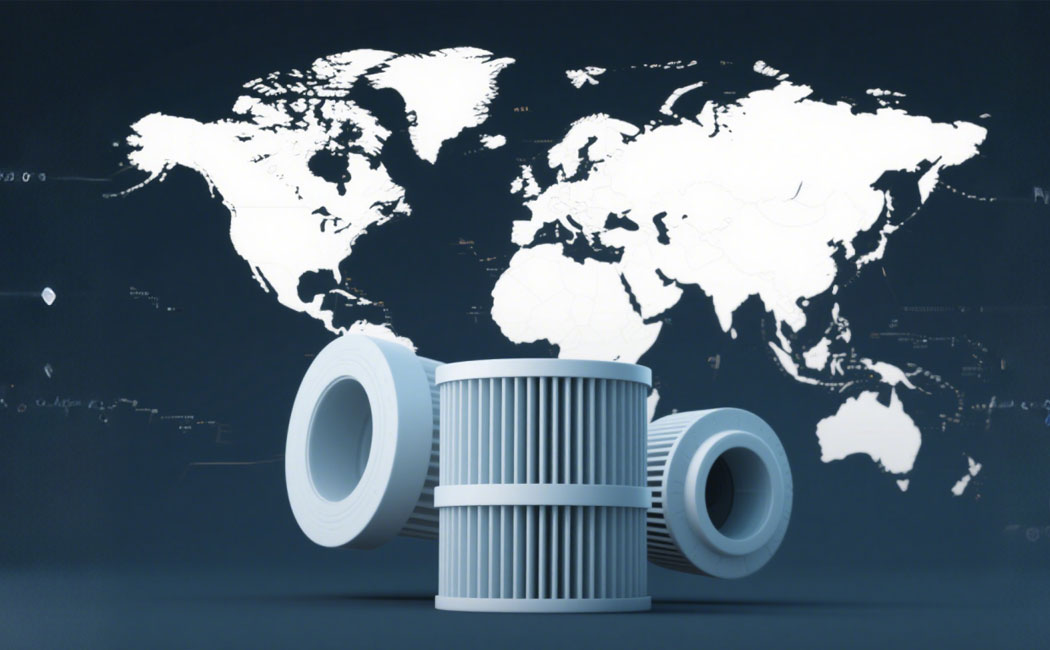How 2025 Environmental Regulations in the EU and China Are Reshaping the Global Filtration Industry
As nations worldwide intensify efforts to combat climate change and reduce industrial pollution, 2025 marks a pivotal year for environmental policy updates—particularly in the European Union (EU) and China. For filtration companies, these evolving regulations present both challenges and opportunities. Here’s an analysis of how the latest policies will impact the industry and what businesses can do to stay ahead.
1. EU’s Green Deal 2.0: Stricter Emission Standards and Circular Economy Mandates
The EU’s updated Green Deal 2025 introduces stricter emission thresholds for industrial sectors, including chemicals, automotive, and energy production. Key updates include:
Extended Producer Responsibility (EPR): Manufacturers must now design filtration systems for recyclability, pushing demand for durable materials like stainless steel mesh and epoxy-coated filters that withstand multiple lifecycles.
Microplastic Restrictions: New limits on microplastic emissions from wastewater treatment plants will drive innovation in advanced filtration media, such as high-density filter papers and non-toxic adhesives compliant with REACH standards.
Energy Efficiency Requirements: Production equipment must now meet ISO 50001 energy management standards, accelerating adoption of automated, low-energy filtration manufacturing systems.
Industry Impact: Companies offering corrosion-resistant stainless steel screens, reusable filter cartridges, and energy-efficient production lines will gain a competitive edge in EU markets.
2. China’s “Double Carbon” Goals: Filtration at the Heart of Industrial Upgrades
China’s 2025 environmental roadmap reinforces its 2060 carbon neutrality pledge with:
Air Quality Targets: PM2.5 and VOC emission caps for heavy industries will boost demand for precision air filtration systems, including HEPA-grade filter paper and multilayer steel mesh for industrial scrubbers.
Water Reuse Mandates: By 2025, 90% of industrial parks must adopt closed-loop water systems, creating opportunities for advanced membrane filtration materials and anti-clogging wedge wire screens.
Green Supply Chain Laws: Filtration suppliers must provide full material disclosures (e.g., non-PFAS adhesives) and carbon footprint data to qualify for government contracts.
Industry Impact: Localized production of eco-friendly filter media, such as biodegradable epoxy resins and recycled steel mesh, will align with China’s sustainability incentives.
3. Cross-Border Compliance: Navigating Dual Standards
Global filtration suppliers face increasing complexity as EU and Chinese regulations diverge:
EU’s Carbon Border Tax (CBAM): Imported filtration components, including steel plates and polymer-based materials, will face levies unless produced using renewable energy—a push toward solar-powered manufacturing facilities.
China’s GB Standards: Exporters to China must ensure products meet updated GB/T 38597-2023 for filtration efficiency, favoring modular designs with replaceable parts (e.g., snap-in filter frames).
Strategic Response: Forward-thinking companies are investing in dual-certified products, such as hybrid filter papers tested to both EU EN 779 and China GB/T 6165 standards, to streamline cross-border trade.
4. Innovation Opportunities: Materials and Smart Technologies
Regulatory pressures are accelerating R&D in:
Sustainable Alternatives: Plant-based filter media and recyclable polymer coatings to replace traditional plastics.
IoT-Enabled Systems: Smart filters with embedded sensors (e.g., pressure drop alerts) that comply with EU’s Digital Product Passport requirements.
Waste-to-Resource Models: Partnerships with recycling firms to repurpose used stainless steel mesh into new filtration components.
Adapting to Thrive in 2025’s Regulatory Landscape
For filtration businesses, compliance is no longer just about meeting standards—it’s about leveraging policy shifts to innovate and capture emerging markets. By focusing on durable materials, circular design principles, and transparent supply chains, companies can turn regulatory challenges into growth drivers.
Share:
Categories
- blog(6)






